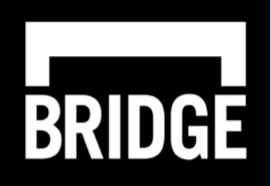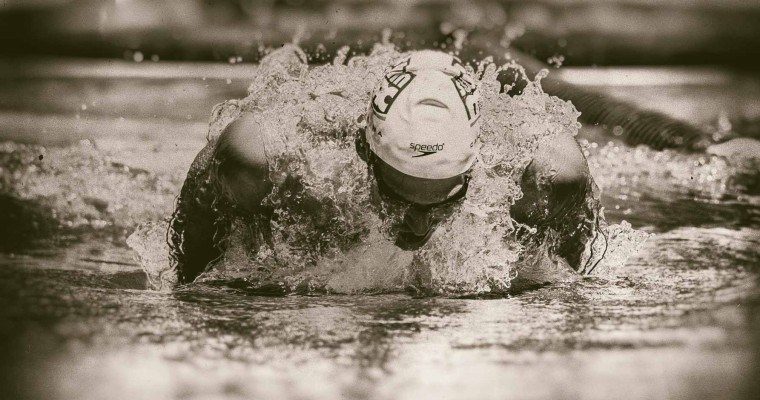Swimmers train differently depending on their stroke specialty and preferred distances. Butterflyers, backstrokers, breastrokers, and freestylers require unique strength exercises much like sprint, middle-distance, and distance athletes need variation among their workouts. While the general phases of strength training are the same across all swimmers, there should be particular movements within each workout that translate to the strokes and distances they swim most often. Let’s discuss how to customize strength training for your races.
Sprinters vs. Distance Swimmers
Perhaps the greatest difference in strength training lies between the two ends of the swimming spectrum—sprint and distance athletes. Sprint athletes need to harness quick muscle recruitment by developing a greater density of fast twitch muscle fibers. This can be achieved through strength training that focuses on power and speed. Sprint athletes require a longer preparatory phase leading up to their power phase because they will execute more extensive power lifts than distance swimmers. This prep work is necessary so the athlete can learn progressions for power movements, prevent injury, and ensure the proper muscles are recruited using good technique.
On the other hand, distance swimmers need to simulate their experience in the water with strength exercises that emphasize stability and endurance. The repetitive nature of their swimming requires greater stability in the shoulder girdle, hip capsule, and core to create more efficient long-axis rotation. In strength training, this translates to less power work and more stability work. For example, if a sprinter will be doing a bench press using the barbell, a distance swimmer may execute the bench press using dumbbells while lying on a swiss ball (also known as a physio ball). This variation makes the athlete work hard to remain stable during the repetitions. Distance swimmers may execute more bodyweight exercises than sprinters. One example would be doing sets of pushups with upper body rotation to mimic the body position of freestyle.
Middle distance athletes will much more closely approximate the sprinter program. If you swim mostly 200-meter races or less, you will need to integrate power into your strength training.
Stroke-Specific Training
In addition to distance-specific training, swimmers should customize their strength exercises based on the primary strokes they swim. Athletes need to replicate the same pattern of muscle activation in dryland as they will use in the pool. Long-axis strokes (back and free) will demand rotational strength through the core as the body rotates side to side in the transverse plane. Short-axis strokes (fly and breast) require core strength in the sagittal plane as the abdomen moves forward and backward in that dolphin-like undulation. Breastrokers and IM’ers require more lateral leg work to target muscles used in breastroke kicking, which is drastically different in terms of biomechanics from flutter or dolphin kicking. Athletic trainers and coaches can slightly modify the format of their athletes’ workouts to fit their stroke styles. These modifications are slight changes within a general theme. For example, if the team is working through a set of lunges, breastrokers may opt for lateral lunges whereas flyers, backstrokers, and freestylers may choose forward or reverse lunges. If the team is set to do core strength, back and freestylers might work bicycle crunches and side planks while breastrokers and flyers might try pikes and knee tucks on a swiss ball.
Strength training can be easily customized to your performance needs with exercises that approximate your pattern of movement in the water. Swimmers will have different strength goals depending on their races. Start optimizing your training today to build strength that translates to great swimming performances.

ABOUT BRIDGEATHLETIC
 BridgeAthletic works with elite professional, collegiate, and club swimming programs to provide a turnkey solution for dryland training. Led by Nick Folker, the top swimming strength and conditioning coach in the world, our team builds stroke-specific, custom-optimized dryland programs for each of our clients. The individualized workouts are delivered directly to athletes via our state of the art technology platform and mobile applications. Check Nick and BridgeAthletic out as recently featured in SwimSwam.
BridgeAthletic works with elite professional, collegiate, and club swimming programs to provide a turnkey solution for dryland training. Led by Nick Folker, the top swimming strength and conditioning coach in the world, our team builds stroke-specific, custom-optimized dryland programs for each of our clients. The individualized workouts are delivered directly to athletes via our state of the art technology platform and mobile applications. Check Nick and BridgeAthletic out as recently featured in SwimSwam.
ABOUT NICK FOLKER
 Nick Folker is the Co-Founder and Director of Elite Performance at BridgeAthletic. Nick’s roster of athletes includes 35 Olympians winning 22 Olympic Medals, 7 team NCAA Championships and over 170 individual and relay NCAA championships. Megan Fischer-Colbrie works as the Sports Science Editor at BridgeAthletic. Megan was a four-year varsity swimmer at Stanford, where she recently graduated with a degree in Human Biology. The Championship Series by BridgeAthletic is designed to empower athletes with tips from the pros that will help them reach peak performance come race day. We will be covering competition-focused topics such as nutrition, recovery, stretching, and mental preparation.
Nick Folker is the Co-Founder and Director of Elite Performance at BridgeAthletic. Nick’s roster of athletes includes 35 Olympians winning 22 Olympic Medals, 7 team NCAA Championships and over 170 individual and relay NCAA championships. Megan Fischer-Colbrie works as the Sports Science Editor at BridgeAthletic. Megan was a four-year varsity swimmer at Stanford, where she recently graduated with a degree in Human Biology. The Championship Series by BridgeAthletic is designed to empower athletes with tips from the pros that will help them reach peak performance come race day. We will be covering competition-focused topics such as nutrition, recovery, stretching, and mental preparation.
Follow BridgeAthletic on Twitter here.
Like BridgeAthletic on Facebook here.
Swimming News / Swim Training courtesy of BridgeAthletic, a SwimSwam partner.

Very informative, but what would someone who does all distances free and both flys? I’m always afraid that my muscles will get large and bulky, instead of stretched and toned. :/
Your muscles will get larger if you’re training for hypertrophy and eating a large caloric surplus. It’s not something to be afraid of, larger muscles have lots of benefits and it’s difficult to do and requires a specific focus. You won’t accidentally get large strong muscles without working for them.
Hypertrophy is typically accomplished through slightly higher rep ranges. Anything from 1-5 reps is typically training strength, 5-20 is hypertrophy (getting bigger), and 20 – up is muscular endurance. These are loose guidelines but that’s the basic rule of thumb.
The big and bulky part also has a tremendous amount to do with what’s going on in the kitchen. Eat healthy amounts of quality foods that will fuel your… Read more »